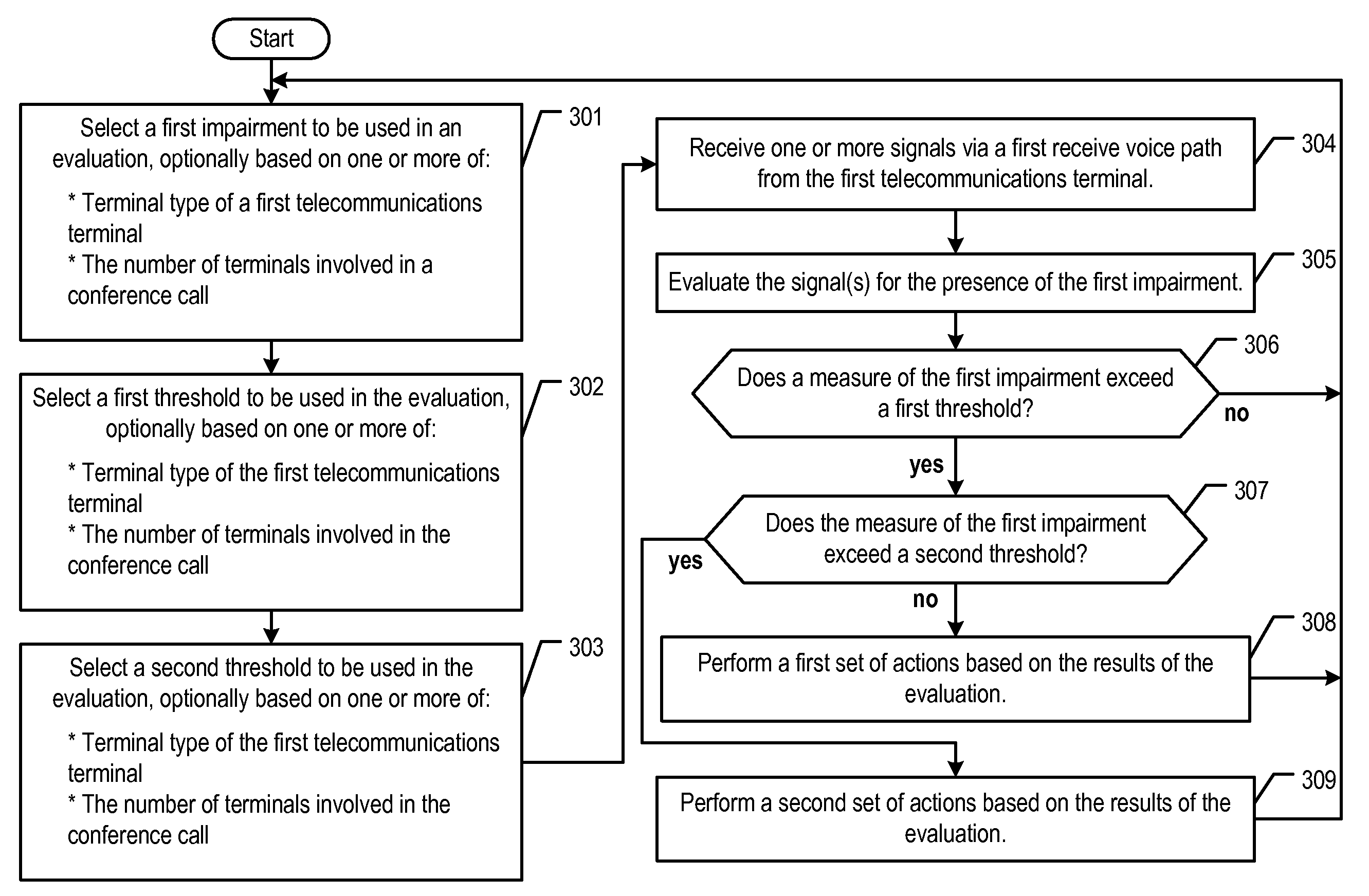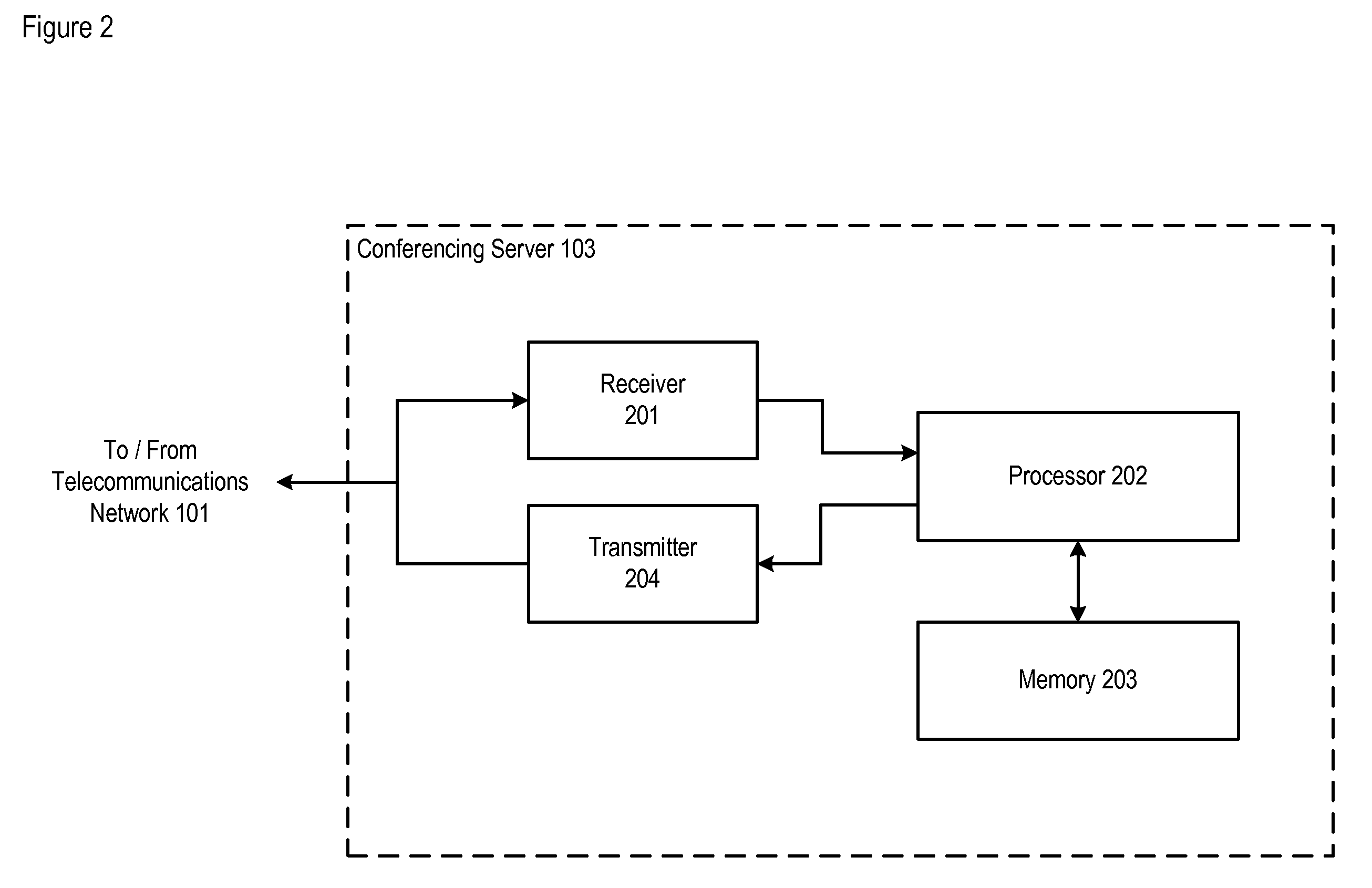Monitoring Signal Path Quality in a Conference Call
a signal path and conference call technology, applied in the field of telecommunications, can solve the problems of invasive prior art techniques in many instances of conference calls, and achieve the effect of reducing distractions and poor telephone connection quality
- Summary
- Abstract
- Description
- Claims
- Application Information
AI Technical Summary
Benefits of technology
Problems solved by technology
Method used
Image
Examples
Embodiment Construction
[0016]FIG. 1 depicts telecommunications system 100 in accordance with the illustrative embodiment of the present invention. Telecommunications system 100 comprises telecommunications network 101; telecommunications terminals 102-1 through 102-M, wherein M is a positive integer; conferencing server 103; and administrator terminal 104, interconnected as shown. Telecommunications system 100 is capable of both packet-based and circuit-based switching and transmission of media signals (e.g., voice, audio, video, etc.), as is well-known in the art. However, it will be clear to those skilled in the art, after reading this specification, how to apply the present invention to alternative embodiments with all packet-based switching and transmission or all circuit-based switching and transmission.
[0017]Telecommunications network 101 is a telecommunications network that comprises one or more of the Internet, the Public Switched Telephone Network (PSTN), and so forth. Network 101 comprises or is...
PUM
 Login to View More
Login to View More Abstract
Description
Claims
Application Information
 Login to View More
Login to View More - R&D
- Intellectual Property
- Life Sciences
- Materials
- Tech Scout
- Unparalleled Data Quality
- Higher Quality Content
- 60% Fewer Hallucinations
Browse by: Latest US Patents, China's latest patents, Technical Efficacy Thesaurus, Application Domain, Technology Topic, Popular Technical Reports.
© 2025 PatSnap. All rights reserved.Legal|Privacy policy|Modern Slavery Act Transparency Statement|Sitemap|About US| Contact US: help@patsnap.com



